 It became official today that Sen. Tom Harkin of Iowa will become chairman of the Senate health committee, replacing the late Sen. Edward Kennedy. The move means that Harkin will no longer be chairman of the agriculture committee, but says he will remain as a member of the committee which he has been on since 1985. “My dedication to the Agriculture Committee dates back to my first year in Congress when I served on the House Agriculture Committee in 1975,” Harkin said.
It became official today that Sen. Tom Harkin of Iowa will become chairman of the Senate health committee, replacing the late Sen. Edward Kennedy. The move means that Harkin will no longer be chairman of the agriculture committee, but says he will remain as a member of the committee which he has been on since 1985. “My dedication to the Agriculture Committee dates back to my first year in Congress when I served on the House Agriculture Committee in 1975,” Harkin said.
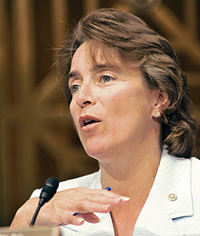 The new chairman of the ag committee is Sen. Blanche Lincoln of Arkansas, who has served on the committee since 1998. “As a seventh-generation Arkansan and farmer’s daughter, I know my father is smiling down on me today,” Lincoln said. “I thank Senator Harkin for his tremendous leadership. As Chairman, I will work with my colleagues to build upon the Committee’s strong record and devote my full energy to producing forward-looking, balanced priorities on behalf of all families and communities. I will continue to fight for the hardworking farm families and rural communities who provide the safest, most abundant and affordable supply of food and fiber in the world.” Lincoln is the first woman ever to chair the committee.
The new chairman of the ag committee is Sen. Blanche Lincoln of Arkansas, who has served on the committee since 1998. “As a seventh-generation Arkansan and farmer’s daughter, I know my father is smiling down on me today,” Lincoln said. “I thank Senator Harkin for his tremendous leadership. As Chairman, I will work with my colleagues to build upon the Committee’s strong record and devote my full energy to producing forward-looking, balanced priorities on behalf of all families and communities. I will continue to fight for the hardworking farm families and rural communities who provide the safest, most abundant and affordable supply of food and fiber in the world.” Lincoln is the first woman ever to chair the committee.
American Farm Bureau Federation president Bob Stallman commented on the committee chair changes in a statement. “Sen. Lincoln has been a long-time friend of Farm Bureau. She received the Golden Plow Award in 2008, the highest honor the American Farm Bureau Federation presents to members of Congress, for her steadfast support of America’s farmers and ranchers,” said Stallman. “Farm Bureau is also pleased that Sen. Harkin has agreed to continue to serve on the Senate Agriculture Committee. Sen. Harkin has always been deeply committed to the nation’s farmers and ranchers, and we are confident he will continue to represent and hear the concerns of agriculture as he helps set the tone for important issues such as healthcare, education and labor in his new chairmanship.”


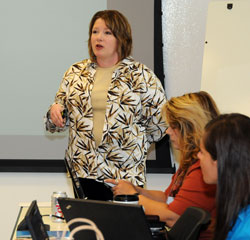 The first presenter this morning at the
The first presenter this morning at the  It became official today that Sen. Tom Harkin of Iowa will become chairman of the Senate health committee, replacing the late Sen. Edward Kennedy. The move means that Harkin will no longer be chairman of the agriculture committee, but says he will remain as a member of the committee which he has been on since 1985. “My dedication to the Agriculture Committee dates back to my first year in Congress when I served on the House Agriculture Committee in 1975,” Harkin said.
It became official today that Sen. Tom Harkin of Iowa will become chairman of the Senate health committee, replacing the late Sen. Edward Kennedy. The move means that Harkin will no longer be chairman of the agriculture committee, but says he will remain as a member of the committee which he has been on since 1985. “My dedication to the Agriculture Committee dates back to my first year in Congress when I served on the House Agriculture Committee in 1975,” Harkin said.  The new chairman of the ag committee is Sen. Blanche Lincoln of Arkansas, who has served on the committee since 1998. “As a seventh-generation Arkansan and farmer’s daughter, I know my father is smiling down on me today,” Lincoln said. “I thank Senator Harkin for his tremendous leadership. As Chairman, I will work with my colleagues to build upon the Committee’s strong record and devote my full energy to producing forward-looking, balanced priorities on behalf of all families and communities. I will continue to fight for the hardworking farm families and rural communities who provide the safest, most abundant and affordable supply of food and fiber in the world.” Lincoln is the first woman ever to chair the committee.
The new chairman of the ag committee is Sen. Blanche Lincoln of Arkansas, who has served on the committee since 1998. “As a seventh-generation Arkansan and farmer’s daughter, I know my father is smiling down on me today,” Lincoln said. “I thank Senator Harkin for his tremendous leadership. As Chairman, I will work with my colleagues to build upon the Committee’s strong record and devote my full energy to producing forward-looking, balanced priorities on behalf of all families and communities. I will continue to fight for the hardworking farm families and rural communities who provide the safest, most abundant and affordable supply of food and fiber in the world.” Lincoln is the first woman ever to chair the committee.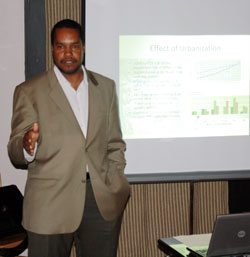 Although I didn’t get to attend the Novus Media Day dinner last night, Jeremy Lutgen helped me out so you can actually hear the guest speaker. He’s
Although I didn’t get to attend the Novus Media Day dinner last night, Jeremy Lutgen helped me out so you can actually hear the guest speaker. He’s  The National Agri-Marketing Association is calling for entries for its annual “Best of” competition.
The National Agri-Marketing Association is calling for entries for its annual “Best of” competition.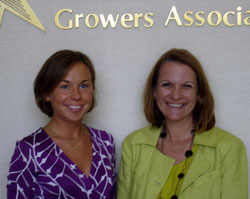 Let’s welcome these newcomers to the
Let’s welcome these newcomers to the 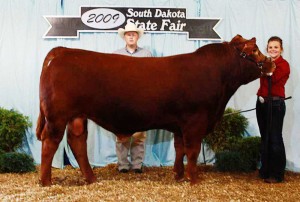 It’s been a few weeks since I have had the chance to sit down and blog on AgWired. I can’t believe how crazy busy the summer got, and how quickly it is fading into fall. In the past two weeks, I was at the Minnesota and South Dakota State Fairs with cattle in tow, and it’s amazing how much time and effort goes into taking a few head of cattle to display at livestock expositions! Anyway, I thought I would share some of the highlights of the last couple of weeks, and now, it’s time to get back in the saddle and get down to the business of blogging!
It’s been a few weeks since I have had the chance to sit down and blog on AgWired. I can’t believe how crazy busy the summer got, and how quickly it is fading into fall. In the past two weeks, I was at the Minnesota and South Dakota State Fairs with cattle in tow, and it’s amazing how much time and effort goes into taking a few head of cattle to display at livestock expositions! Anyway, I thought I would share some of the highlights of the last couple of weeks, and now, it’s time to get back in the saddle and get down to the business of blogging!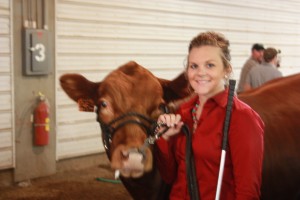 While at the fairs, I took in cattle shows, Century Farm Awards, Beef Cookoffs, speech contests, town hall meetings, carnival food, concerts and more. In the upcoming weeks, I will share all of it with you. So, get ready for a fun recap of my state fair adventures. And, while we’re at it, why don’t you tell me some of your state fair stories? What have you been up to lately? What fairs did you attend, and what did you do while you were there? Can’t wait to hear all about it!
While at the fairs, I took in cattle shows, Century Farm Awards, Beef Cookoffs, speech contests, town hall meetings, carnival food, concerts and more. In the upcoming weeks, I will share all of it with you. So, get ready for a fun recap of my state fair adventures. And, while we’re at it, why don’t you tell me some of your state fair stories? What have you been up to lately? What fairs did you attend, and what did you do while you were there? Can’t wait to hear all about it!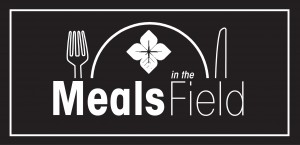
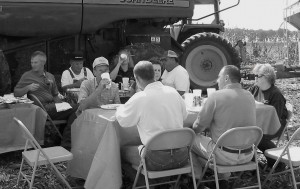
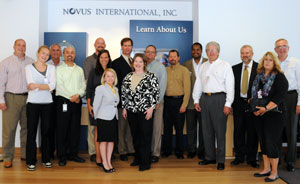 Here is the happy group attending the Novus International Media Day. It includes Novus and media folks. We caught a helpful staffer walking by so we could all be in the photo.
Here is the happy group attending the Novus International Media Day. It includes Novus and media folks. We caught a helpful staffer walking by so we could all be in the photo.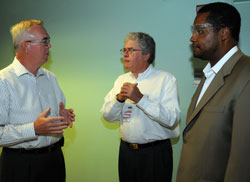 Our tour guide for the
Our tour guide for the